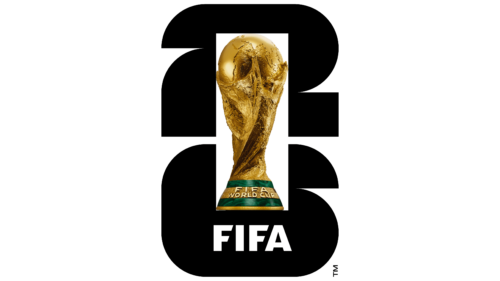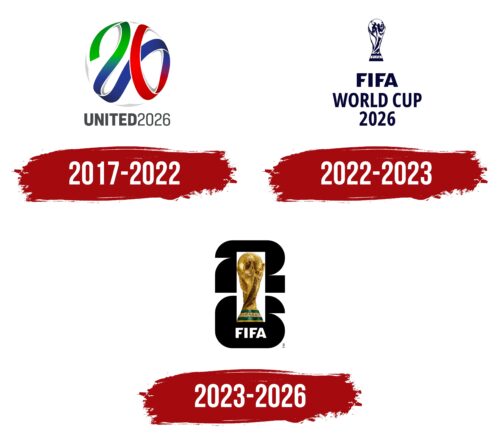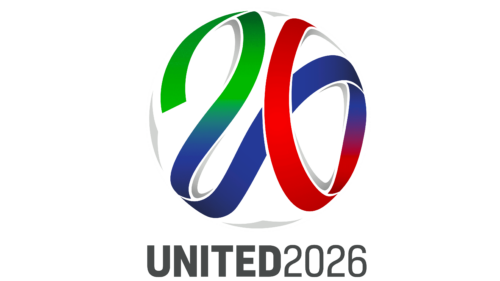The FIFA 2026 FIFA World Cup logo, unveiled in the spring of 2023, features an iconic attribute – the ball. This is the main trophy, so it is in the foreground, on top of a makeshift splash pad. And it is not only the ball but also the globe, indicating the global significance of the competition. At the bottom of the improvised pedestal are inscriptions indicating the organizer and the type of sporting event. They are taken on both sides in wide green rings with a pattern like malachite. Behind the figure in a white vertical rectangle is the year of the championship – “26”.
World Cup 2026: Brand overview
In an unprecedented move, the 2026 FIFA World Cup will be co-hosted by three countries: Canada, Mexico, and the United States. The story of this extraordinary event began in April 2017 when the trio of countries, collectively known as United 2026, officially submitted their joint bid to FIFA to host the 2026 tournament.
By June 2018, FIFA member countries had approved the United 2026 bid as the sole bid to host the tournament due to a lack of competing bids. The appeal of the collective bid was the presence of existing infrastructure and facilities already in place, spread across all three host countries, thus eliminating the need for significant new construction. World Cup matches will be played in stadiums spread across Canada, Mexico, and the United States.
Sixteen cities in the three organizing countries have been selected as match venues, of which ten are in the United States and three each in Mexico and Canada. The USA has been chosen to host both the opening match and the final of the tournament.
Another historic feature of the 2026 World Cup is the expansion of the participating teams from the usual 32 to 48. The tournament will consist of 80 matches, a significant increase from previous tournaments.
The tournament is scheduled to begin in June 2026, with the final scheduled for July 19, 2026. The tournament is expected to attract millions of visitors to North America. The 2026 FIFA World Cup is already shaping up to be the biggest in its history, uniquely organized by three different soccer federations. Preparations for this grand event are well underway.
Meaning and History
What is World Cup 2026?
The 2026 World Cup is the 23rd edition of the FIFA World Cup, scheduled for June-July 2026. The host countries will be the United States, Mexico, and Canada. The sporting event will unfold simultaneously in 16 cities and will feature 48 FIFA member teams.
2017 – 2022
2022 – 2023
2023 – 2026
The 2026 World Cup logo features the first use of a photograph of the FIFA World Cup trophy: a hyper-realistic image of a golden statuette with two human figures holding a globe. Such a detailed image is inconvenient to reproduce on souvenirs, but it is what makes the emblem unique. In the background are black numbers “2” and “6”, lined up one above the other. If you visually divide them into squares and fragments in the form of a quarter circle, you will get 48 geometric figures – the same number of teams that will take part in the competition.
The use of hyper-realistic imagery gives the emblem an unprecedented level of complexity. The intricate detailing reflects the scale and significance of the world event. The black numbers in the background not only represent the year but are also a visual illustration of the scale of the competition, emphasized by 48 geometric shapes. This multifaceted approach to design makes the logo both unique and meaningful.







